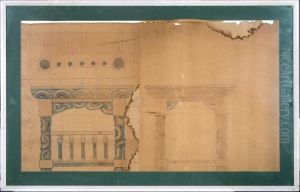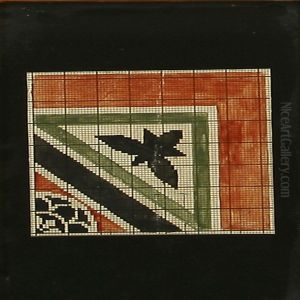Thorvald Bindesboll Paintings
Thorvald Bindesbøll was a Danish architect and designer, born on July 21, 1846, in Copenhagen, Denmark. He was a central figure in the Scandinavian Arts and Crafts movement and is particularly known for his contribution to Art Nouveau in Denmark. Bindesbøll came from an artistic family; his father was the neoclassical architect Michael Gottlieb Bindesbøll, who designed the Thorvaldsen Museum in Copenhagen.
Bindesbøll was initially trained as an architect at the Royal Danish Academy of Fine Arts, where he studied from 1862 to 1870. However, he did not follow in his father's footsteps and instead developed a distinct style that incorporated influences from Japanese art, medieval European art, and more contemporary movements. He was interested in a holistic approach to design, which included not only buildings but also decorative arts such as ceramics, silverware, and textiles.
Throughout his career, Bindesbøll created a variety of works, ranging from ceramics and furniture to textiles and typefaces. One of his most notable contributions was to the field of ceramic design, where he worked with the pottery factory Bing & Grøndahl. However, he is perhaps best remembered for his work in graphic design; he designed the iconic logo for the Carlsberg beer label, which is still in use today.
Bindesbøll also made significant contributions to architecture, including the design of the Skagen Museum in 1908, although he is less known for his architectural works compared to his contributions in other areas of design. His architectural style was characterized by a use of natural forms, asymmetry, and a departure from classical symmetry and order, aligning with the principles of the Arts and Crafts movement and Art Nouveau.
Thorvald Bindesbøll passed away on August 27, 1908, in Copenhagen. His legacy lives on in his diverse body of work, which continues to be celebrated for its originality and influence on Danish design. Bindesbøll's contributions have been recognized in various exhibitions and retrospectives, and his work remains an important part of Denmark's cultural heritage.

